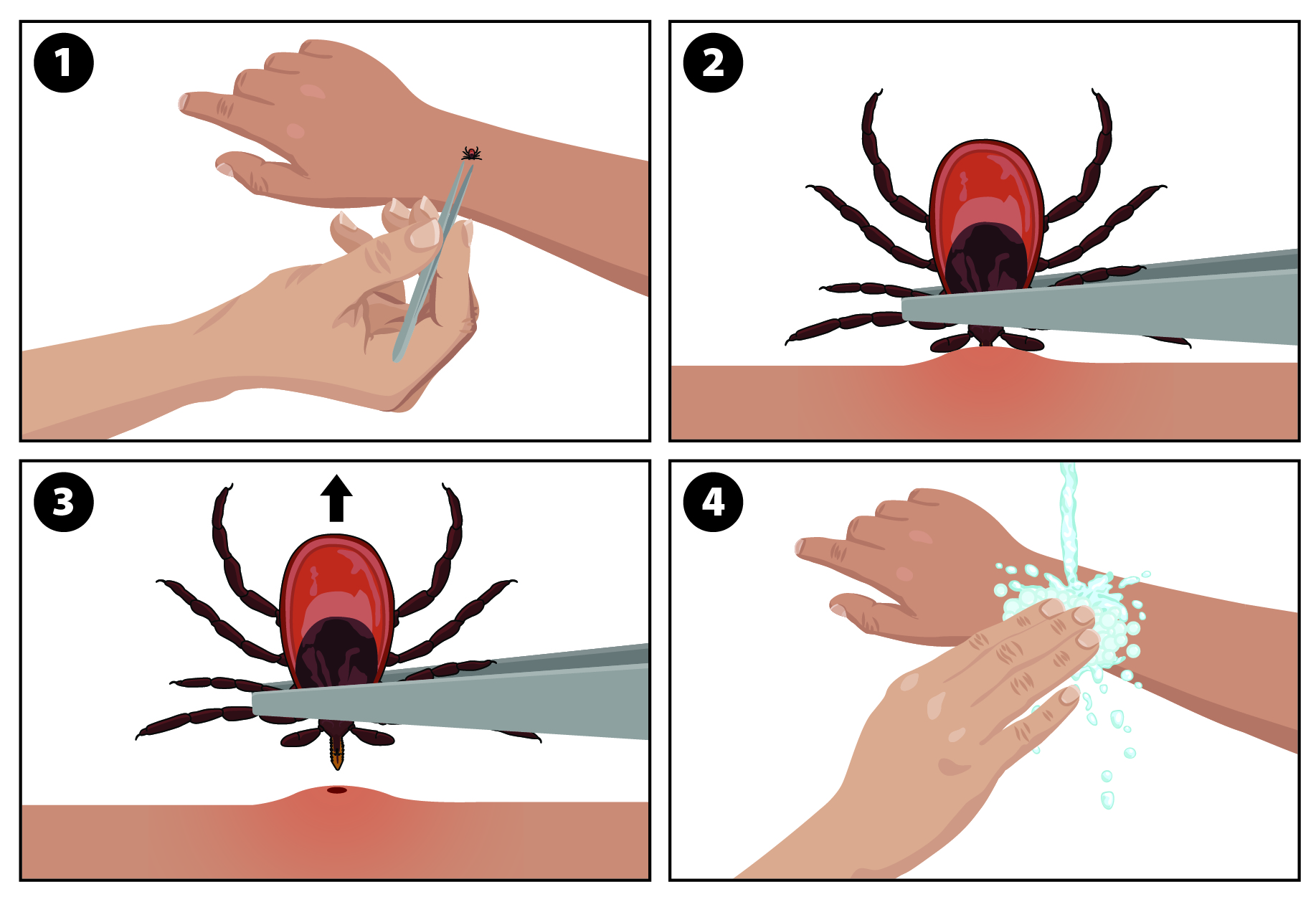- Health
Soap-soaked cotton balls aren’t a reliable method for removing ticks, contrary to recurring viral claim
Key takeaway
Tickborne diseases are a considerable public health concern in some parts of the world, including the U.S., Canada, and Europe. While tickborne diseases can often be treated with antibiotics, some, like Lyme disease, can cause longer-term complications including neurological problems and inflammation of the joints (Lyme arthritis), especially if left untreated. It’s important to remove ticks as soon as they’re spotted on the body to reduce the risk of disease transmission.
Reviewed content

Verdict:
Claim:
Using a soap-soaked cotton ball is a safe and easy way to remove ticks
Verdict detail
Inadequate support: Public health agencies and experts recommend using clean, fine-tipped tweezers to remove ticks as quickly as possible. There isn’t evidence to support the claim that a soap-soaked cotton ball will cause a tick to detach. The longer a tick feeds from a host, the higher the risk that the tick will transmit pathogens that cause diseases.
Full Claim
“A nurse discovered a safe, easy way to remove ticks [...] Apply a glob of liquid soap to a cotton ball. Cover the tick with the soap-soaked cotton ball and swab it for a few seconds (15-20); the tick will come out on its own and be stuck to the cotton ball when you lift it away”
Review
In early August 2024, a post claiming that soap-soaked cotton balls were a “safe, easy way to remove ticks” circulated on Facebook. The post received tens of thousands of interactions, including more than 83,000 shares and more than 1,400 likes at the time of writing. It was posted by the account Farmers’ Way, which has more than one million followers on Facebook.
Identical versions of this claim, alleging that the advice comes from “a nurse”, have been shared online for more than 15 years and debunked by multiple fact-checkers, including Reuters, Snopes, USA Today, PolitiFact, and the Australian Associated Press.
Removing ticks using this method isn’t recommended by experts and can potentially cause harm by way of tickborne diseases. We explain more below.
Removing ticks as quickly as possible reduces the risk of tickborne diseases
Tickborne diseases are a considerable public health concern in certain parts of the world. Commonly found in the U.S., Canada, and Europe, ticks can transmit pathogens that cause diseases like Lyme disease while they feed on hosts by sucking their blood.
While ticks can’t fly or jump onto hosts, they do engage in what is known as “questing”. According to the U.S. Centers for Disease Control and Prevention (CDC):
“While questing, ticks hold onto leaves and grass by their third and fourth pair of legs. They hold the first pair of legs outstretched, waiting to climb on to the host. When a host brushes the spot where a tick is waiting, it quickly climbs aboard. Some ticks will attach quickly and others will wander, looking for places like the ear, or other areas where the skin is thinner.”
Once a tick has landed on a host, it can feed for many days. Thus, the “goal is to remove the tick as quickly as possible—not waiting for it to detach”, according to the CDC. This is because the longer a tick remains on the skin, the more likely it is to transmit bacteria, viruses, or parasites that cause human diseases.
For example, the New York State Department of Health shared that the risk of Lyme disease is “greatly reduced if the tick is removed within 36 hours”. Lyme disease is the most common vector-borne disease in the Northern Hemisphere. If left untreated, Lyme disease can cause neurological symptoms, heart and eye problems, and inflammation of the joints (Lyme arthritis).
This is also why agencies like the CDC and the Forest Service of the U.S. Department of Agriculture (USDA) recommend performing full-body tick checks and showering or bathing as soon as possible after traversing tick-infested areas. Doing so can help to quickly identify and remove ticks from the body. Per the CDC, Figure 1 below indicates areas that should be addressed during a full-body tick check.

Figure 1 – Areas that should be inspected during a full-body tick check. Because of their small size, ticks may go unnoticed on or in these parts of the body. Source: CDC.
Experts recommend using fine-tipped tweezers for tick removal
Using a soap-soaked cotton ball to encourage a tick to “come out on its own”, as suggested by the Facebook post, isn’t a reliable method for tick removal.
In an interview with NPR in 2018, Kerry Padgett, a vector-borne disease specialist affiliated with the California Department of Health, said:
“Don’t use Vaseline or try to burn the tick or use a cotton swab soaked in soft soap or any of these other techniques that might take a little longer or might not work […] You really want to remove the tick as soon as possible.” [emphasis added]
Further, a study comparing five different methods of removing adult American dog ticks found that substances comparable to soap, like petroleum jelly, didn’t cause ticks to detach[1].
Public health agencies like the CDC instead recommend using clean, fine-tipped tweezers to pull a tick off the skin, as indicated in Figure 2 below. After a tick is removed, the CDC advises that it be disposed of by “putting it in alcohol, placing it in a sealed bag/container, wrapping it tightly in tape, or flushing it down the toilet”.

Figure 2 – Method for safely removing ticks. The CDC recommends using clean, fine-tipped tweezers (1) to grab the tick by its head and pull upward with steady, even pressure (2). After the tick is removed (3), the bite area should be cleaned with rubbing alcohol or soap and water (4). Source: CDC.
REFERENCES
- 1 – Needham GR. (1985) Evaluation of Five Popular Methods for Tick Removal. Pediatrics.



